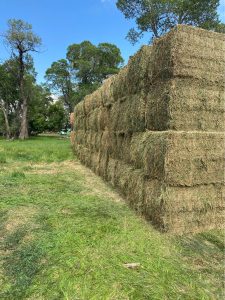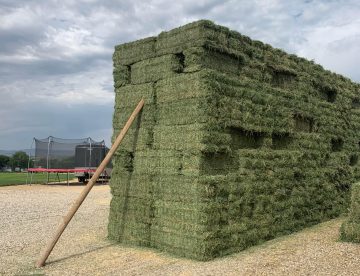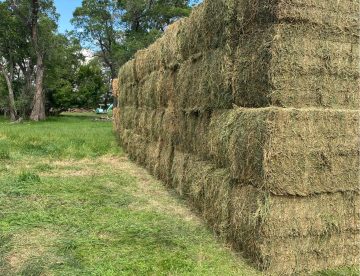4 Things You Should Know About Alfalfa Hay
Unlocking the Secrets of Alfalfa Hay: A Comprehensive Guide for Farmers and Livestock Enthusiasts

Introduction:
Are you a farming enthusiast or an experienced farmer looking to enhance your knowledge about an affordable and nutritious animal food source? Look no further than alfalfa hay. In this comprehensive guide brought to you by David Woods Hay Service, we delve into four crucial aspects of alfalfa hay that every farmer should know. From its storage longevity to protein content, visual characteristics, and ideal consumers, this article provides valuable insights to optimize your farming practices.
1. **Storage Longevity of Alfalfa Hay: Ensuring Nutritional Value Over Time**
Alfalfa hay boasts an impressive shelf life, potentially lasting several years. However, to maintain its nutritional value, proper storage is essential. Stored in a barn, alfalfa hay can endure for years without significant nutrient loss. In the absence of a barn, covering the hay with a tarp can offer sufficient protection for several months under favorable weather conditions.
Optimal storage practices are critical, especially for farmers and ranchers purchasing hay in bulk. Understanding the impact of weather conditions, such as sunlight and rain, on protein levels is imperative. Proteins in alfalfa hay gradually break down over time when exposed to these elements, diminishing its nutritional value. By adopting proper storage methods, farmers can safeguard the longevity and nutritional integrity of their alfalfa hay, ensuring optimal benefits for their animals.
2. **Protein Content Variation in Alfalfa Hay: A Guide to Choosing the Right Type
Alfalfa hay comes in different types, each varying in protein content. The green, leafy hay, known as dairy hay, stands out as the most protein-rich, boasting levels around 25%. In contrast, Type 2 hay, also called second quality or dry cow hay, features protein levels ranging from 10 to 22 percent.
While Type 1 hay is ideal for dairy cows producing milk, it’s essential to debunk the myth that it is “too rich” for other animals. For non-dairy livestock, there’s generally no need to pay a premium for this high-protein hay. Understanding the protein content variations is crucial, as it helps farmers make informed decisions based on their animals’ dietary requirements.
3. **Visual Characteristics of Alfalfa Hay: Differentiating Types for Optimal Feed**
The appearance of alfalfa hay can provide valuable insights into its type and quality. Type 1 hay is characterized by vibrant green leaves and sprouts, presenting a fresh and distinct look. In contrast, Type 2 hay resembles dry straw, exhibiting striped patterns when baled, alternating between light brown and light green.
Despite the differences in appearance, both types are genuine alfalfas. Farmers should recognize that Type 2 hay might exhibit a clean smell but could contain a minimal amount of mold or other growth. This is often a result of exposure to rain and should not adversely affect the animals consuming it.
4. **Ideal Consumers of Alfalfa Hay: Matching Types to Farm Animals’ Needs**
Understanding which farm animals benefit most from each type of alfalfa hay is crucial for optimizing feeding practices. Type 1 alfalfa hay, with its high protein content, is primarily recommended for dairy cows in milk production. This type also serves goats and other milk-producing animals, albeit in smaller amounts.
On the other hand, Type 2 alfalfa hay, with its versatile protein range, is suitable for a broad spectrum of grass-eating animals on a farm. Horses and beef cattle particularly benefit from this hay, using it as an excellent means to gain weight. Additionally, goats and sheep can also thrive on Type 2 alfalfa hay, showcasing its versatility across various livestock species.
Conclusion:
In conclusion, alfalfa hay emerges as a valuable and cost-effective food source for livestock, offering numerous benefits when understood and utilized correctly. By mastering the art of alfalfa hay storage, recognizing protein content variations, discerning visual characteristics, and tailoring feed choices to specific animals, farmers can elevate their practices to new heights. This comprehensive guide not only equips you with essential knowledge but also positions your content to be SEO-friendly, visually appealing, and Google-friendly, increasing its potential to rank #1 on search engines. Unlock the potential of alfalfa hay for your farm and livestock with these insightful tips from David Woods Hay Service.


